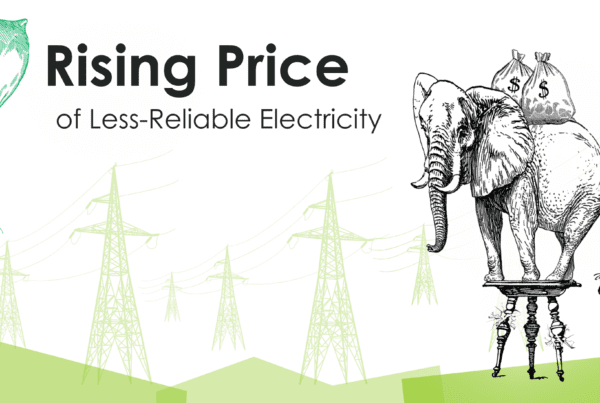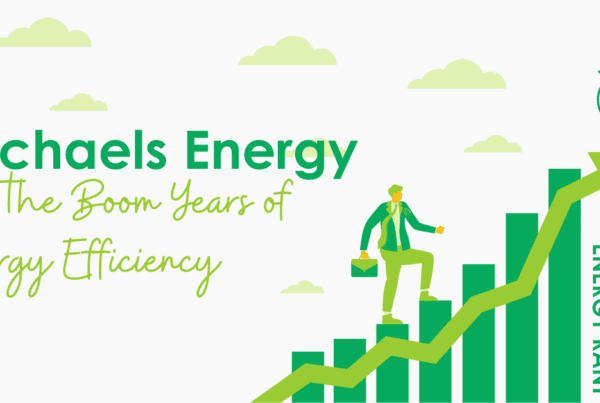I was recently pushed over the edge again by multiple opinion pieces declaring that energy efficiency is a waste of time and money because of rebound effect. Rebound basically means that if consumers buy an efficient appliance, car, or light bulb, they will simply use it more and therefore save less, or even use more energy at the proverbial “end of the day”.
First in this series was an opinion piece from a Cal State Fullerton professor published in The Wall Street Journal. Below is my response to the journal:
Robert J. Michaels’ commentary on August 20th suggests energy efficiency does not capture estimated savings from widgets (lights, air conditioners) because of rebound effect, which put simply is the theory/fact that lower operating costs of widgets results in more widget use. No one, including the fast growing energy efficiency industry, disagrees with rebound effect.
However, Mr. Michaels uses a Mexican refrigerator program example to demonstrate his point. Why not use an example of delivering subsidized Toyota Priuses to the rural Chinese? Certainly a Prius uses more gasoline than a moped or a rickshaw. He dismisses out of hand a recent rebound study performed by the American Council for an Energy Efficient Economy because it “examined only a minority of rebound findings…” [If only we could say with such ease that some of the stuff we review during program evaluations is totally bogus…]
Energy Efficiency Resource Standards produce real results. Standards in many states include targets that actually reduce total energy consumption, and they are being met as evidenced by independent third party evaluations. Energy efficiency, and its cousin demand response, are used as virtual power supplies to sell into forward capacity markets, including those on the east coast and northeast.
Electric utilities are more or less regulated monopolies, and as such regulators need to, and do a good job of balancing the needs of consumers (low energy cost) and the needs of utilities and their shareholders (return on investment). The regulatory model to date has relied on ever growing sales and profit. However, with energy efficiency slowing, and even reversing revenues and profits, this model will need changing in coming years. One of our recommendations is to allow utilities to invest in energy efficiency on the customer side of the meter and earn the same weighted cost of capital as they would with new power plants. Another is “decoupling”, which allows utilities to maintain return on fixed costs of power plants and distribution systems while sales decline.
Energy efficiency is no longer a hobby for geeks and hippies. Large multi-national corporations including food processors, auto, appliance, high technology, household products, and diversified product manufacturers are investing heavily in energy efficiency to be competitive, reduce risk of energy price volatility, and of course immediately hit the bottom line. Even commercial real estate and multi-family housing owners are wising up to the capital generating capacity of energy efficiency in their facilities. This wouldn’t be happening if Mr. Michaels’ theories were accurate.
As mentioned on this blog one time recently, who buys a dinky car with good mileage to drive it more? Nobody. Dinky cars are tools to get from A to B. They are not recreational vehicles. When people buy efficient air conditioners they don’t get the urge to keep their house at 57 degrees in July. A new refrigerator isn’t going to be set to 30 degrees or have its door held open to view the contents for long periods of time.
One effect of having more money left in consumers’ pockets is they may buy more stuff, which takes energy to produce, transport and use. I’m sure there is some of this, but parents may also decide to send their kid to Columbia rather than the local community college with the savings generated from their new clothes washer. Does that consume more energy? No. The kid flies to New York and back a couple times a year rather than driving to the community college every day, thirty miles round trip, with dad’s 14 year old gas guzzler.
Or, did they ever think of this? Savings from new windows result in enough free cash flow to replace the energy guzzling TV with a new efficient one. I.e., the opposite of rebound is also true in many cases. Earnings generated from the first wave of energy efficiency measures finance the next round. In fact, I’ve actually demonstrated before that energy guzzling buildings have an easier path to real energy independence (net zero) because they have an enormous flow of cash going out the door each month to pay the electric and gas bills. Redirecting this hemorrhage to energy efficiency accumulates so much cash that eventually the money that used to flow to the utility can be used to purchase on-site renewable energy AFTER the much more cost effective EE measures have been implemented and paid off.
What is the opposite of rebound? How about slam dunk? Let’s call it the “delta lambda ja





Join the discussion One Comment